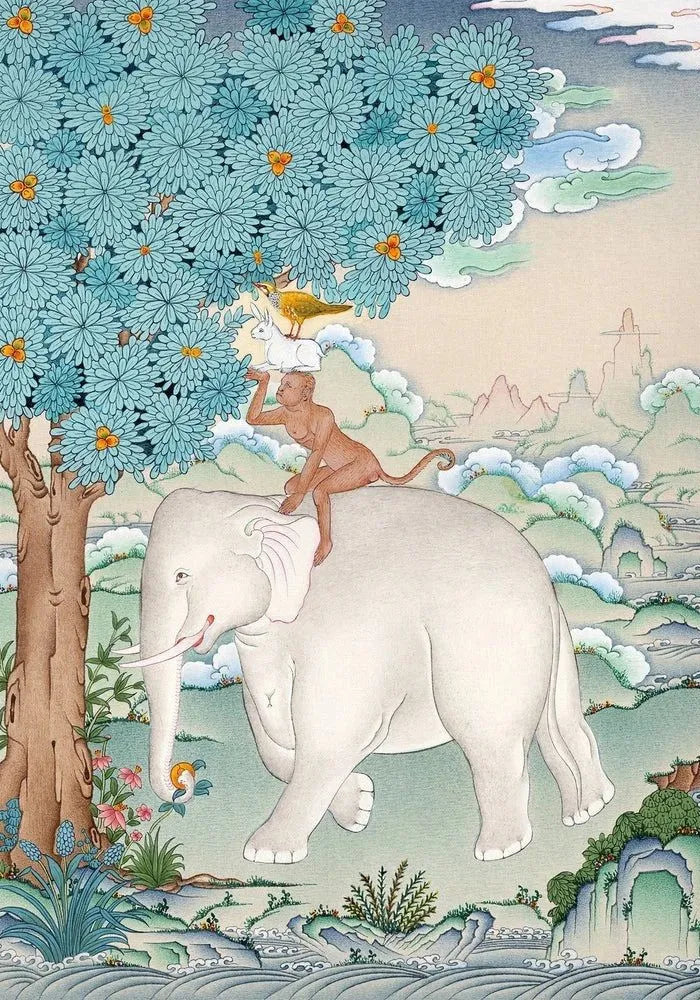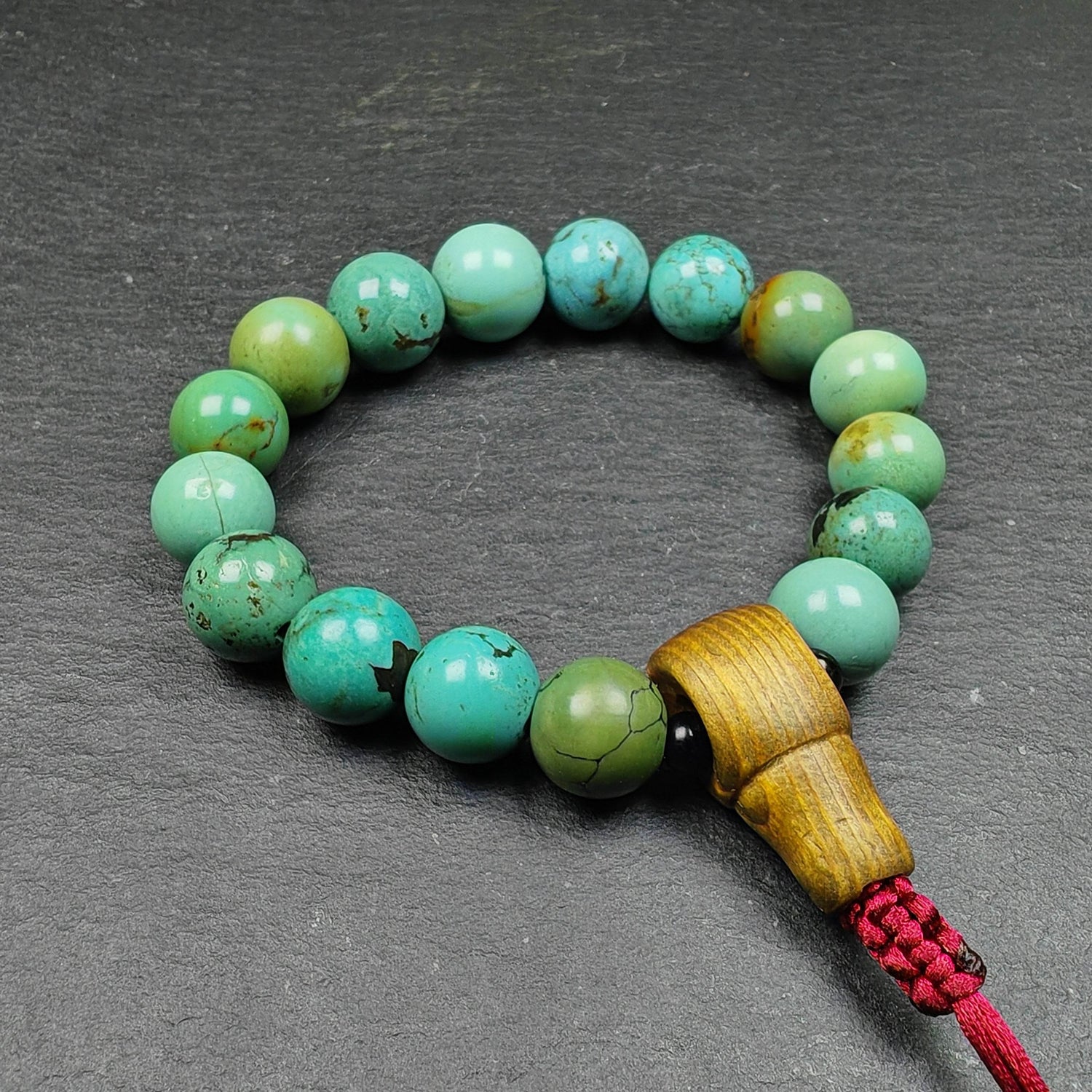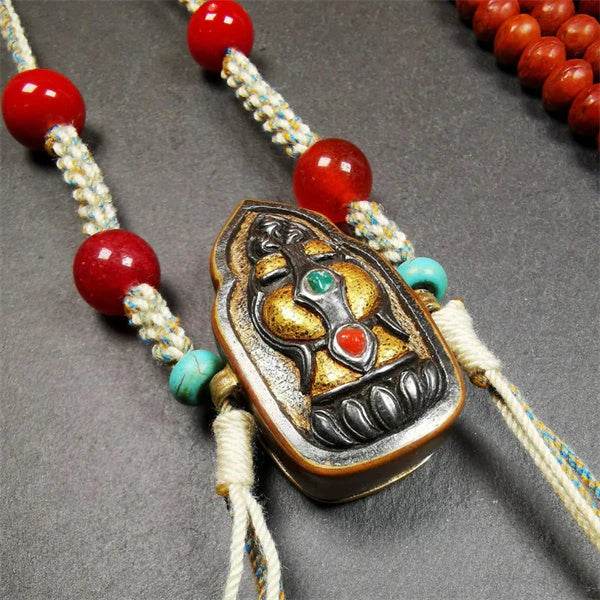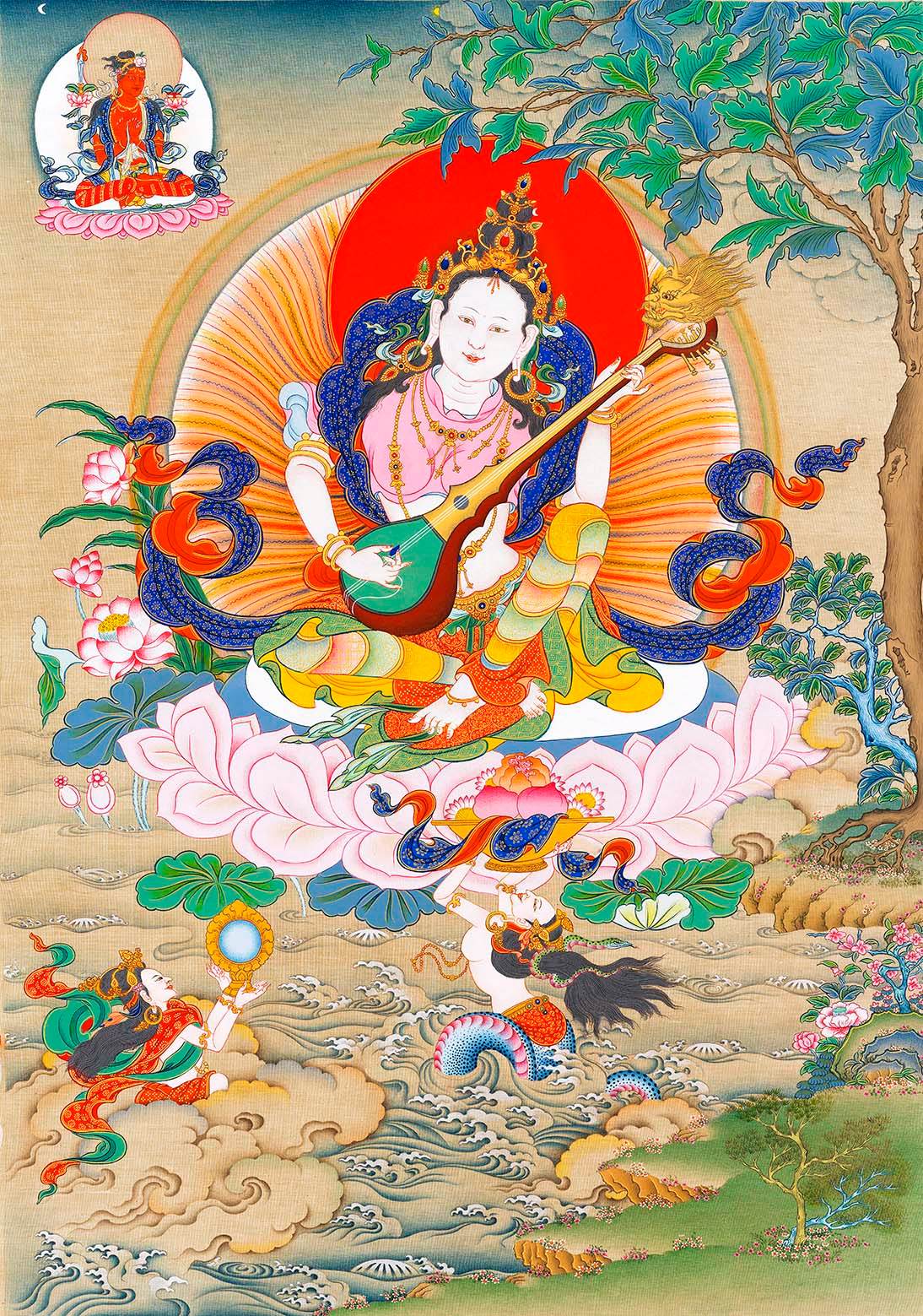
Bhutanese Female Architect | The Four Harmonious Friends in Tibetan Architecture

Main Gate
Dorji Yangk, a female architect from Bhutan,
has introduced Himalayan vernacular architectural styles to the West.

A dining nook offering a view of the mountain scenery through the window.

Master Bedroom

Living Room
Title: Inside an Incredible Ode to Bhutanese Design in the Colorado Mountains
Author: Tsewang Yangzom
Photography: Annie Schlechter
Translation and Editing: Yang Mao
Central Pillar
Bhutan, a Buddhist nation that prioritizes the Gross National Happiness index, places cultural preservation at its core. Language, attire, painting, and architecture are all esteemed as precious national cultural heritages.
In the realm of architecture, the government enforces mandatory guidelines for every new structure to ensure the perpetuation of "Bhutanese traditional architectural styles, including their elements, layers, proportions, and forms, as well as their values, functions, and significance."

Bhutanese Traditional Architectural Guidelines
Traditional Bhutanese architectural elements typically encompass gently narrowing stone walls, sloped roofs, wooden facades, and a variety of painted motifs. This architectural tradition, having evolved over centuries, is well-suited to the local climatic conditions, available resources, and practical techniques. Most importantly, it achieves a harmonious integration with Bhutan's culture and beliefs.
However, within the framework of these guidelines, traditional architecture also allows for a degree of flexibility and creativity. For instance, some architects have infused their personal visions into the traditional architectural style, endowing it with unique individuality.

Bhutanese Architecture
Image Source: Architectural Digest India
Four Harmonious Friends
This structure is situated in Telluride, in the western United States. From the homeowner's journey to Bhutan in 2014 to the completion of its construction in 2020, everything unfolded as hoped and on schedule.
Its inception is most aptly likened to the Tibetan folk tale "The Four Harmonious Friends," which narrates the story of four animals living in harmony, guarding a wish-fulfilling tree. This tree not only bestows benefits upon all beings but also embodies the core teachings of Mahayana Buddhism within its branches.

"The Four Harmonious Friends"
Image Source: Enlightenment Thangka
Although the overall architectural style is secular in structure, its form and decorative effects incessantly convey the voice of the Dharma.
Los Angeles designer Madeline Stuart describes this building as "a spiritual journey," which is reflected in every corner, color, architectural element, decoration, and design of the house, such as the colorful carpets, tapestries, and traditional textiles.

Architectural Interior.
This structure also harmonizes with Telluride's mountainous and valley-rich terrain. "Telluride gold," a local stone, is utilized as masonry material for the walls. To enhance stability, the walls gently narrow from the foundation upwards, a characteristic feature of traditional dzong architecture.
Moreover, the space between the sloped roof and the attic is left open, traditionally used for storage and drying vegetables or animal feed.

Architectural Stone Wall.
Bhutanese style
The project leader, Khenpo Tsering, brought construction timber from a village in southern Bhutan and assembled a team of artisans who spent two years carving and painting the wood with intricate designs.
Upon arrival in Telluride, carpenters and builders began the assembly process without any written instructions. Instead, they relied on numerous phone conversations with Tsering, who was unable to be on-site in person due to the pandemic.

Living Room
On the day of shipment, as the timber was loaded into a large container, everyone erupted in cheers and celebration, accompanied by local delicacies, music, and dance—a quintessential display of Bhutanese flair.
Additionally, to ensure the timber's safe arrival in Telluride and the successful completion of the construction, the shipment date was determined through a consultation with a local astrologer. Thus, these celebratory rituals are an inseparable cultural essence of the project's perfect conclusion.

Staircase
Architectural Design
At the entrance of the hall, a three-meter-long depiction of "The Four Harmonious Friends" greets every guest, symbolizing harmony within the family and society. The traditional carpets and lighting were designed by Stuart.
The first floor features a modern open-plan space, encompassing a living room, dining area, and kitchen. Stuart has integrated Bhutanese textile elements into the furniture, and every corner is adorned with custom-made traditional Bhutanese carpets.

The painting of "The Four Harmonious Friends" at the main entrance.
The home office is furnished with Chinese vintage desks and chairs. The painted decorative motif on the door features the Dharmachakra, one of the Eight Auspicious Symbols in Buddhism, which represents the teachings of the Buddha. The Dharmachakra is always turning, symbolizing the overcoming of all afflictions and the continuous dissemination of the Dharma.

Home Office
The kitchen cabinets, designed by Stuart, were manufactured and painted in Los Angeles before being transported to Telluride. The handles, inspired by India, represent elephants.

kitchen
The dining table and chairs were custom-designed by Stuart, adorned with Bhutanese fabric upholstery. The table, originally used in the homeowner's previous residence 25 years ago, has been rejuvenated with an ebony finish, finding new life in this fresh space.

Dining Table and Chairs
The exquisite wooden carvings inside are inspired by the typical styles found in Bhutanese monasteries, dzongs, or palaces. They were crafted over two years by Khenpo Tsering and his team of carpenters. Each carved motif depicts the harmonious coexistence of humans, animals, and nature.

Architectural Interior.
The Jadhang Tazi, a traditional Bhutanese balcony railing, is repurposed here as the handrail for the second-floor staircase. It is adorned with intricate and elaborate carvings, topped with the wish-fulfilling jewel (ནོར་བུའི་ཏོག). The carvings feature auspicious symbols such as snow lions, dragons, and phoenixes, with the lighting designed by Stuart.

Handrail
The cloud motif above the master bedroom was designed by Stuart and painted by Michaele Miller. This pattern is commonly seen in typical Bhutanese homes, temples, dzongs, and palaces.
The guest bedroom is also adorned with traditional textiles, including bedding made from yak wool, a fabric once used for clothing by the people of Bumthang in north-central Bhutan. Stuart added additional textile covers to the pillowcases and headboard cushions.

Guest Bedroom Design
The traditional Bhutanese balcony offers a panoramic view of the mountain scenery. It also features intricate carvings, traditional carpets, and chairs.
The window sill, known as རབ་གསལ། (Rabsel), showcases interconnected fine woodwork. This is one of the most iconic and aesthetically pleasing architectural elements in Bhutan, consisting of a wooden structure that combines multiple cantilevered windows and panels.

Balcony
Mago, the main entrance of a Bhutanese house, is the most significant part of the entire structure. It faces north, a direction first associated with the wealth deity Kubera, symbolizing the increase of prosperity.
Secondly, this orientation offers an excellent viewing experience, allowing one to appreciate the serene mountains and the setting sun. The architecture and the environment naturally form a harmonious coordination.

Architectural Stone Wall
Sincere Elegance
The homeowner remarked, "Although this is a modern project, the rough textures, slightly cracked edges, and tiny fissures in the carvings and paintings bring everything so close to the earth."
"This space is so spiritual and peaceful, yet so livable and quiet. It's something that cannot be fully appreciated through photographs. Everything is so harmonious and elegant, but not in a formal or stiff way—it's a genuine, heartfelt elegance," Stuart explained.

Meditation Room
In summary, this structure fully embodies the philosophy and values of Bhutanese architectural design. Originating from Bhutan, it now stands in a Western valley. It represents a Himalayan breeze that resonates across the world and serves as a guardian of sacred art.

Traditional Interior Elements
Chief Female Architect
Dorji Yangk studied architecture at Deakin University in Australia and furthered her education in the UK, Norway, and Japan. After graduating in 1996, she became Bhutan's first native female architect, the first female president of the Bhutan Institute of Architects, and the first female president of the South Asian Regional Association of Architects. She has been dedicated to heritage conservation work ever since.
Over the past 15 years, she has not only co-founded a heritage conservation studio but also drafted Bhutan's first heritage conservation guidelines. She advocates for the integration of traditional architectural concepts and craftsmanship into new buildings and construction projects.

Dorji Yangk Image source: WADEASIA
She has been involved in numerous projects, including the famous Tiger's Nest Monastery, the National Archives, the National Museum, and the Royal Academy of Performing Arts in Bhutan. Currently, she is engaged in architectural design projects ranging from high-end resorts, offices, museums, and restaurants to private residences.
As a native Bhutanese, Yangki advocates for sustainable architecture and biophilic design, connecting people with nature, enhancing well-being, contributing to the Gross National Happiness index, and fostering a happy Bhutan.

Bhutanese Architecture
Image source: Architectural Digest India
The Himalayan Breeze Resonates Across the World.







1 comment
GgNlstI rypdmqG FYnG FGdaXM gyy sqevyf